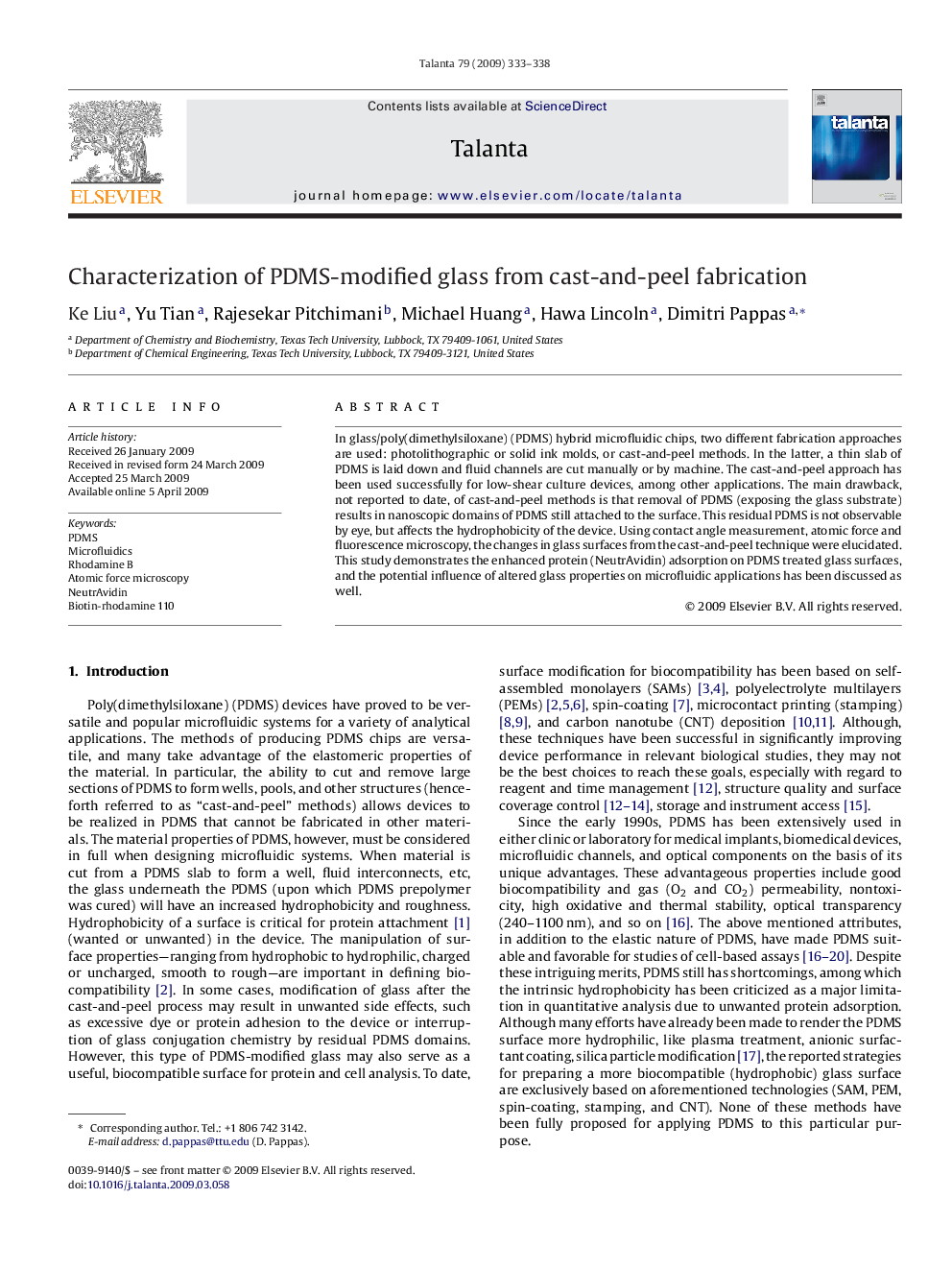| Article ID | Journal | Published Year | Pages | File Type |
|---|---|---|---|---|
| 1244810 | Talanta | 2009 | 6 Pages |
In glass/poly(dimethylsiloxane) (PDMS) hybrid microfluidic chips, two different fabrication approaches are used: photolithographic or solid ink molds, or cast-and-peel methods. In the latter, a thin slab of PDMS is laid down and fluid channels are cut manually or by machine. The cast-and-peel approach has been used successfully for low-shear culture devices, among other applications. The main drawback, not reported to date, of cast-and-peel methods is that removal of PDMS (exposing the glass substrate) results in nanoscopic domains of PDMS still attached to the surface. This residual PDMS is not observable by eye, but affects the hydrophobicity of the device. Using contact angle measurement, atomic force and fluorescence microscopy, the changes in glass surfaces from the cast-and-peel technique were elucidated. This study demonstrates the enhanced protein (NeutrAvidin) adsorption on PDMS treated glass surfaces, and the potential influence of altered glass properties on microfluidic applications has been discussed as well.
